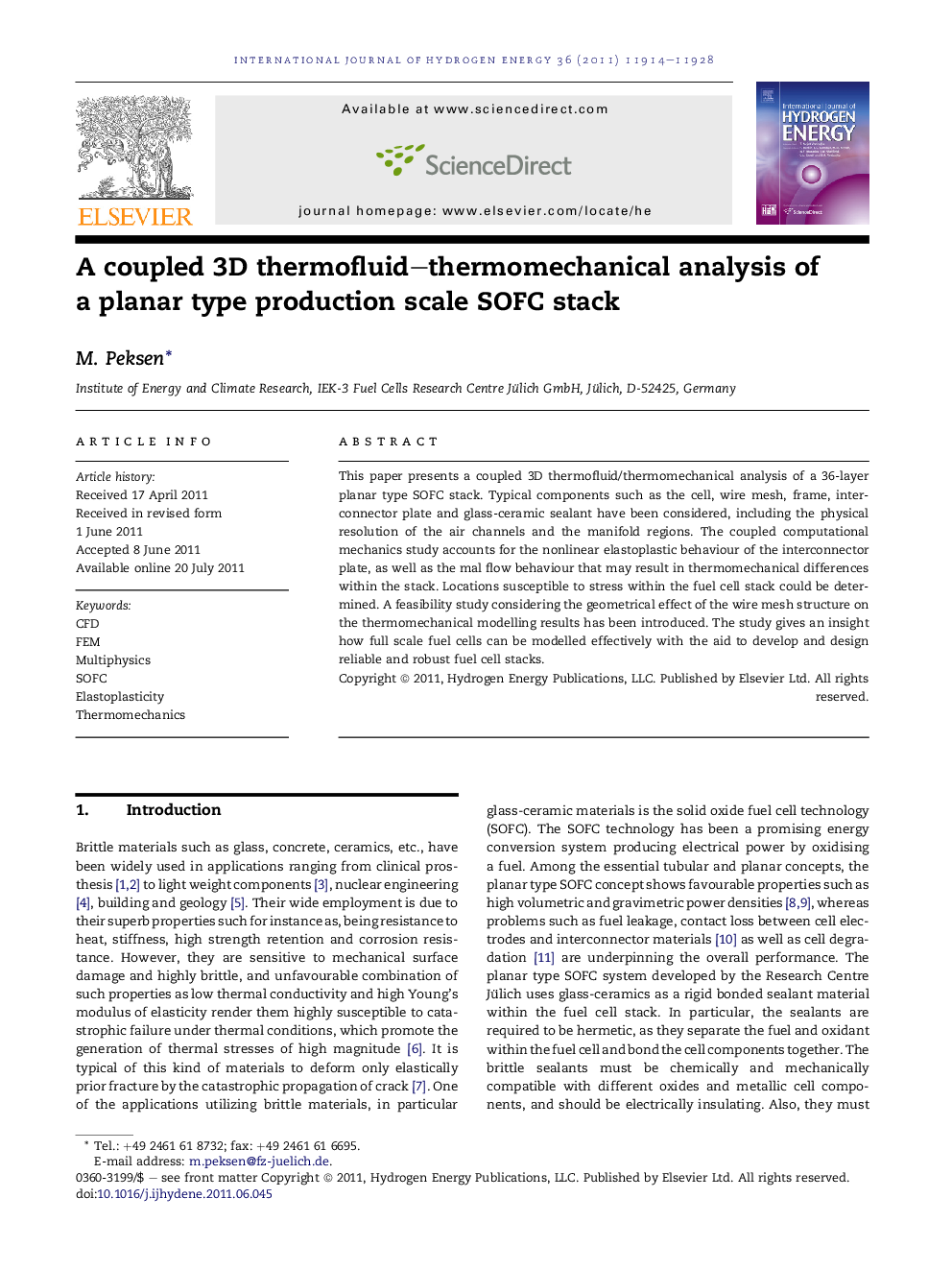| Article ID | Journal | Published Year | Pages | File Type |
|---|---|---|---|---|
| 1275883 | International Journal of Hydrogen Energy | 2011 | 15 Pages |
This paper presents a coupled 3D thermofluid/thermomechanical analysis of a 36-layer planar type SOFC stack. Typical components such as the cell, wire mesh, frame, interconnector plate and glass-ceramic sealant have been considered, including the physical resolution of the air channels and the manifold regions. The coupled computational mechanics study accounts for the nonlinear elastoplastic behaviour of the interconnector plate, as well as the mal flow behaviour that may result in thermomechanical differences within the stack. Locations susceptible to stress within the fuel cell stack could be determined. A feasibility study considering the geometrical effect of the wire mesh structure on the thermomechanical modelling results has been introduced. The study gives an insight how full scale fuel cells can be modelled effectively with the aid to develop and design reliable and robust fuel cell stacks.
► A Coupled 3D thermofluid/thermomechanical 36-layer SOFC stack is analysed. ► Full resolution of the channels and manifold ports are included. ► Continuum modelling is compared to discretely modelled geometries. ► Elastoplastic behaviour of the interconnector plates has been investigated. ► Stress of the sealants are mainly driven by the elastoplastic behaviour of the steel.
